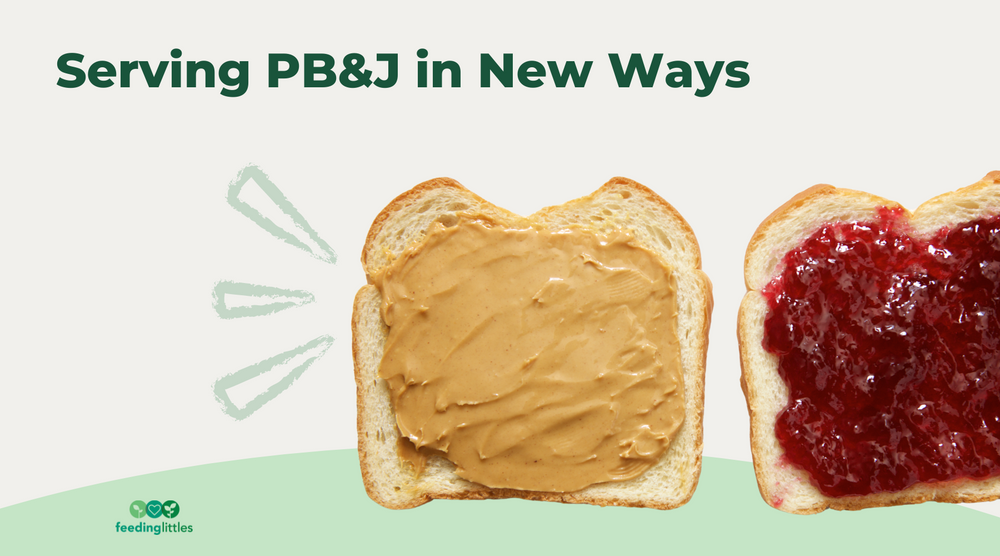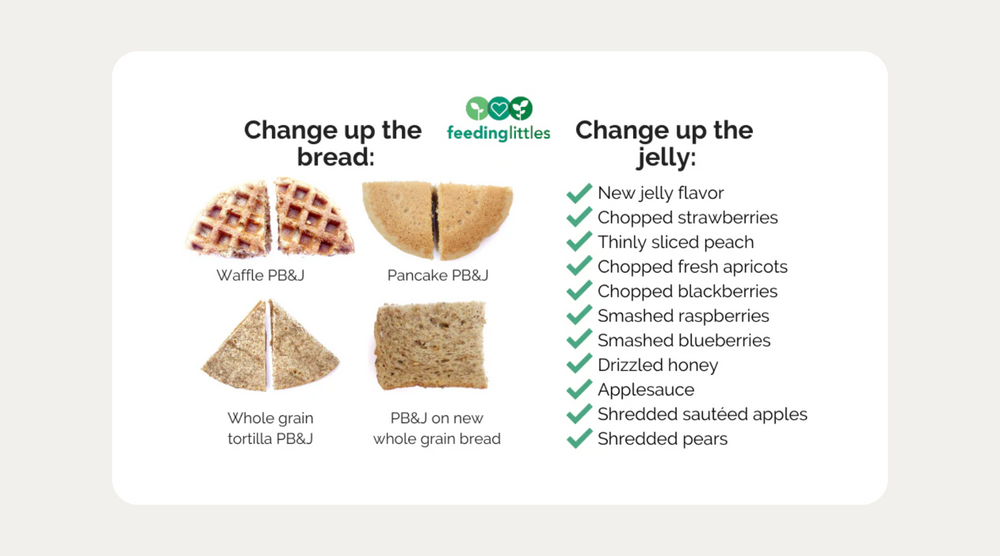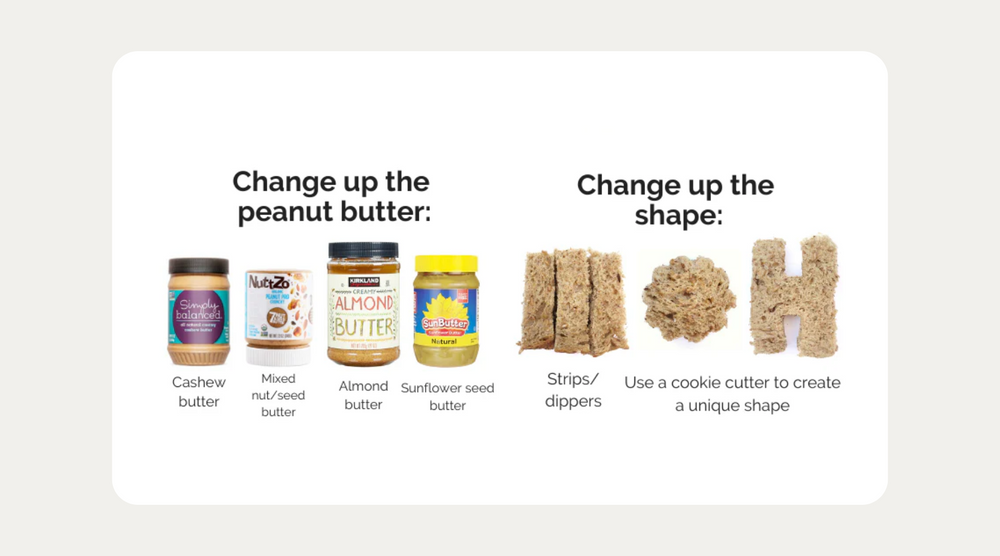
Do you find yourself serving the same PB&J day in, and day out? We wanted to offer some fun and delicious ways to mix it up!
You can find these and many more delicious lunch ideas in our highly-anticipated, photo-filled book Feeding Littles Lunches.
Why is it important to serve variations on the same foods we eat frequently?
- It helps prevent picky eating – the more variety our kids see, the more variety they come to expect. Even cutting something a new way helps prevent picky eating, as kids learn to expect variation in the foods they eat.
- Different foods have different flavors, textures and nutrition – and changing it up helps develop our taste buds and nourish our bodies in different ways.
- Most importantly, new toppings can taste good! Mixing up the way in which we make PB&J opens us up to new flavors and eating experiences.


Smashed fruit on sandwiches? Really?
YES! Megan here - long before I had kids I started using fruit and other toppings on my “PB&Js” because I enjoyed them so much more, and when I shared these ideas with my adult clients they realized how much they enjoyed the satisfying mouth feel and density of whole fruits on their PB&Js.
I even tested smashed raspberries and almond butter sandwiches made with whole grain bread on a bunch of kids about 5 years before I had my first baby. Guess what? They LOVED them. Their parents were shocked. Give it a try! You and your kid may be fans, and you might start changing up how you PB&J!
Note: smashed fruit contains more water than jelly, so it's more likely to bleed through to the bread. Put peanut butter (or other nut/seed butter) on both bread pieces to help prevent this.
What about jelly? Is it “bad?”
Nope. Jelly is easy, convenient, and (to most people) tasty. Yes, it has sugar in it, but it also imparts flavor and might entice a reluctant eater to try something new. We believe that all foods can fit - including some foods with sugar. We offer jelly alternatives above because it's nice to change what we eat from day to day – even if it's just the flavor of jelly – so our kids learn to eat all sorts of foods over time. Obviously whole fruit has more nutrition than jelly, but if your child loves jelly then go for it.
What if my child can't have peanut butter?
If your child is allergic to peanuts (or tree nuts) or if your school is peanut/tree nut-free, sunflower seed butter, granola butter, soy butter or cream cheese can be safe alternatives. Our book Feeding Littles Lunches has allergy swaps for all 75+ lunches - there is surely an option your child will love!
When can I start serving peanut butter and jelly?
Many kids don't have the ability to eat a sandwich until they're 12-18 months old. Check out this post about how to help your child more successfully eat a sandwich. (Feeding Littles Lunches has a great graphic with creative ways to make sandwiches easier for toddlers - check out pages 62-63!)
Enjoy that PBJ, friend!
